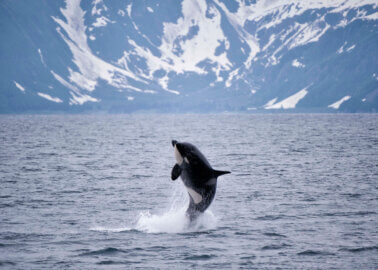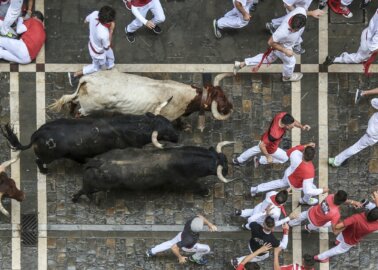Photos From Loro Parque: This Is What Captivity Does to Orcas
PETA US staff members visited Loro Parque marine park in Tenerife, Spain, and filmed orcas who had fractured teeth and other injuries, floated listlessly in tiny tanks and begged for food.
Read on to see the heartbreaking photos of these captive animals.

Loro Parque displays captive birds, dolphins and sea lions, along with six orcas – held captive on indefinite loan from the notorious US abusement park SeaWorld.
Orca calves Kohana and Skyla – who were torn away from their mothers at the ages of 3 and 2, respectively, at SeaWorld Orlando in Florida – and Keto and Tekoa were flown thousands of miles to the Canary Islands.
Morgan, a young female orca who was taken from her ocean home with the promise that she would never be publicly displayed and would be released back into the ocean as soon as she had been rehabilitated, is another of the animals held captive at Loro Parque. And two calves, both inbred, have been born at the marine park: Vicky, who died when she was only 10 months old, and Adán, who has survived for four years in a concrete tank.
PETA US asked veterinarian and marine expert Dr Heather Rally to examine the footage captured at the marine park. The following are just some of the problems she observed among the orcas at Loro Parque:
1. Orcas with “rake marks” caused by aggressive attacks from tankmates

Rake marks are caused when dominant animals scrape their teeth against the skin of less aggressive animals. In the wild, lower-ranking orcas could swim away to safety, but in Loro Parque’s cramped tanks, there’s nowhere for them to go.

These attacks can result in painful and serious injuries, and they’ve been reported as being so severe that blood seeped from an orca’s wounds.

Tekoa has rake marks on both sides of his body, running from his head to his tail fluke. His dorsal fin also appears to be collapsing, which is the result of captivity, having inadequate space to swim and dive.
2. Frustrated orcas biting the sides of their concrete tanks

Orcas are intelligent animals who work cooperatively, have sophisticated social structures, communicate using distinct dialects and swim up to 100 miles every day. Being denied the opportunity to engage in such natural behaviour leaves them frustrated, bored and angry. With little else to do, they neurotically mouth and bite the sides of the tanks.
This orca, who was confined to one of the small back tanks, floated on the surface and was seen rubbing his or her head against the concrete.
3. Orcas with missing or broken teeth

The orcas’ worn and damaged teeth were visible when they opened their mouths to accept food. Some orcas’ teeth were completely missing or ground down to the gum line. Many orcas at Loro Parque had exposed pulp cavities.

These cavities are the result of a painful drilling procedure performed on teeth that have been fractured or otherwise traumatised as a result of life in captivity. Orcas don’t lose their teeth naturally.
4. Orcas floating listlessly and exhibiting atypical behaviour

Wild orcas are inquisitive, energetic and almost always on the move. Orcas at Loro Parque often float motionless at the surface of the water or bob listlessly and Skyla was observed begging for food from nearby trainers.

5. Trainers locking orcas in the smaller tanks and ignoring them

Orcas are sometimes kept isolated in holding tanks, and trainers pay little attention to them.

For example, this orca, who we believe is Morgan, was observed in the back tank splashing and trying to get the attention of a nearby trainer.
6. An orca with mucus running from his eye
 The observers and Dr Rally saw a clear mucus-like substance hanging from Keto’s left eye.
The observers and Dr Rally saw a clear mucus-like substance hanging from Keto’s left eye.

The mucus is possibly a physical response to the irritants found in the aquarium water.
Orcas belong in the ocean. They will never thrive in captivity, and keeping them locked in concrete tanks is wrong. By ignoring these orcas’ ongoing health problems – which have been documented time and again over the past four years – SeaWorld and Loro Parque are showing just how little they care about the welfare of the animals they imprison.
In light of this damning evidence, PETA US is calling on Spain’s Servicio de Protección de la Naturaleza (the Nature Protection Service) to launch an investigation of Loro Parque.
You can speak out for these orcas, too. Please, never visit a marine park, and join the campaign to free Morgan here.



